




























































































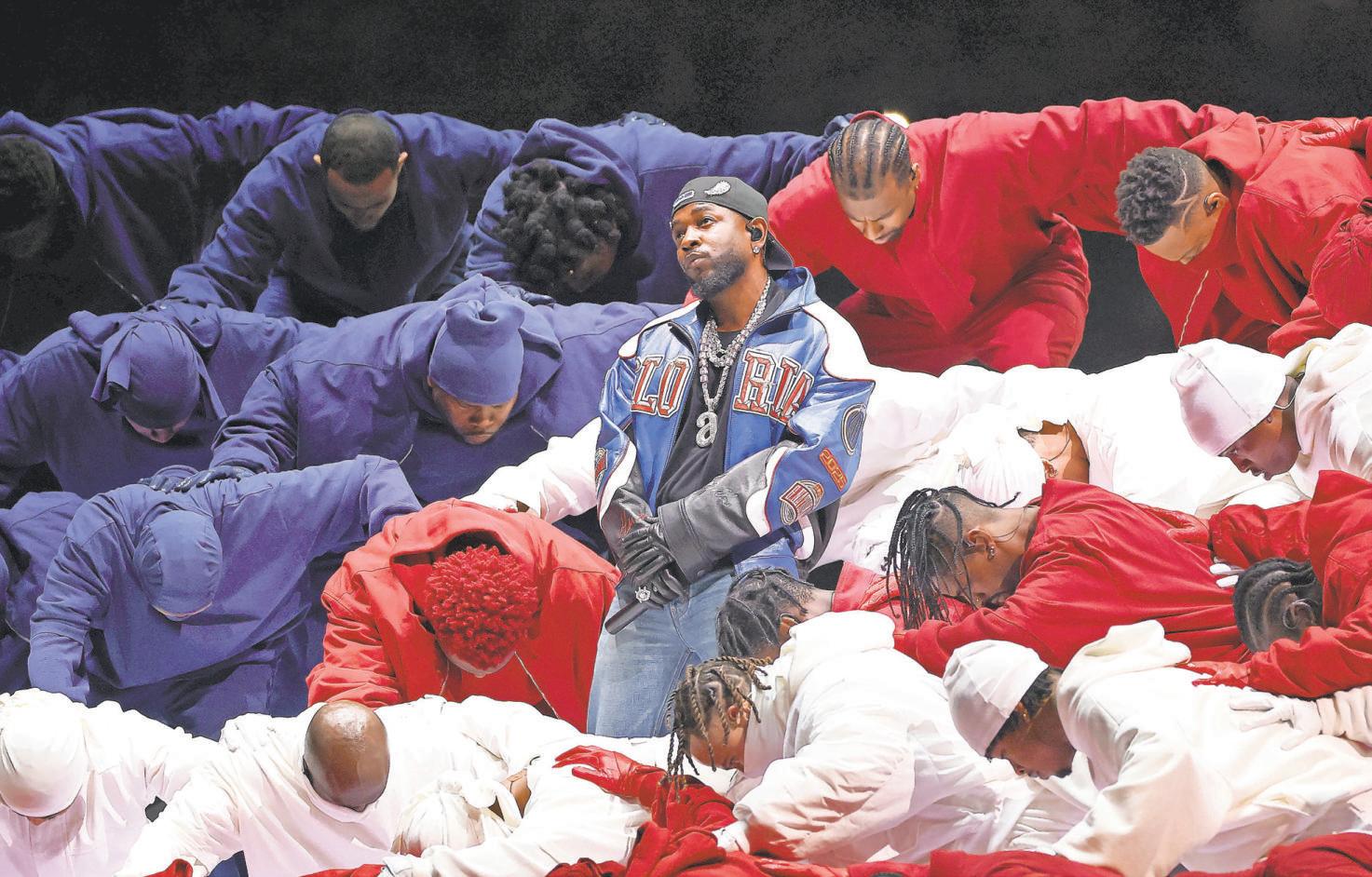
Beyond a Super Bowl halftime show
I’m not even going to front. Many of those incredible, pro-Black, anti-fascism messages that Kendrick Lamar blessed the world with during his Super Bowl halftime performance last weekend went over my head. Maybe that’s telling my age. But what my years on this planet have made clear to me is that we Blackfolk spend so much time focusing on “the show” that we don’t even get into “the game.” Beyond all the Drake disses, Lamar powerfully used his art to call out America’s history of stealing Black labor to build white power, while confining us to the prison yard. And we’ve been talking about it ever since. And that’s my point. Even with messages calling out oppressive systems, we’re still so focused on “the show” that not much movement is being made to get into “the game.” The game of confronting those oppressive systems so they stop oppressing. The game of building our own systems so we can be self-determining. As talented, artistic, and creative as we are, it’s no surprise we can put on a good show. But quiet as it’s kept, we invented the game of civilization-building, problem-solving, and solution-creating. That’s the game we need to be in now more than ever.
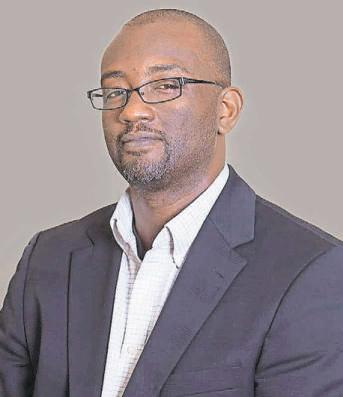
Aswad Walker
step up our game when it comes to telling our story; telling of the history our ancestors made back in the day, and the history we’re making daily. Folk who are anti-Black tend to have a god-complex, thinking they have the right to tell, own, and define our story. Bump that! Let’s continue to show our ancestral genius and do a better job of telling it – to everybody including ourselves, to remind us (in February and beyond) that “we them ones.”
We’ve all heard the phrase “I can show you better than I can tell you.” And it makes perfectly good sense. Actions do speak louder than words. Also, we can literally say anything with our mouths (ex: “Baby, I love you”), but our actions (ex: abuse, disrespect, gaslighting, etc.) show our true heart. Regarding Black history, we’ve traditionally been an “I can show you better than I can tell you” people. We do the work, create the things, set the standards, and then go on about our business. But not being self-determining about telling our story is doing us a disservice. When we don’t tell our story, other folk can swoop in and tell any kind of nonsense about “our story,” and their version becomes “truth.” We’ve got to
Every day, with each new executive order coming from y’all’s POTUS, “We the People” are getting punk-slapped with democracy-eroding, in-your-face fascism. Every day that Elon Musk (the real POTUS) is allowed to dictate US domestic and foreign policy and have unencumbered access to all of our personal information, our “rights” are transforming into wrongs. The killing of USAID, arguably the largest humanitarian aid-delivering entity on planet earth. The shutting down of national entities that keep us abreast of health issues. The shutting down of agencies meant to protect regular citizens from predatory gazillionaires’ efforts to rob us blind. The killing of DEI programs and funding, (that, FYI, benefit white women more than any other group). These things are hurting the folk who elected the current POTUS. But they’re hurting us worse. And no amount of laughing at the FAFO crowd will change that. Only action to fight for the world we want.
On the web
• The Super Bowl-sized Kendrick/Drake smackdown explained.
• Connector Servanté Cook redefines Houston’s creative scene.
• Terrance’s Take on Brittney Griner’s free agency move to Atlanta.
By Aswad Walker
This is not how the founders and supporters of the iconic SHAPE Community Center envisioned its 55th anniversary year. But a fire ravaged roughly 80% of the inside of SHAPE’s 3815 Live Oak location.

Yet, true to form for the resilient community champion and SHAPE executive director and co-founder Deloyd Parker, the Third Ward anchor institution will “build back better,” and it will do so with the help of its many community partners.
Parker led a community meeting where he provided an update on not only the fire damage, but more importantly, the work SHAPE will engage in to move forward and rise from the ashes.
“We want the community to keep in tune with SHAPE by checking our website at SHAPE.org and getting updates on what we are doing,” said Parker. “We’re gonna ask the community to call us and come by and get some marching orders so they’ll know what they can do. Because everybody will be able to do something. What you do will be based on what you’re able to do, whether it’s financial, whether it’s volunteering, whether it’s helping us to get our 3903 Almeda Harambee Building in a condition where we can pass inspections for children’s programming.”
Parker gave specifics to what happened to SHAPE.
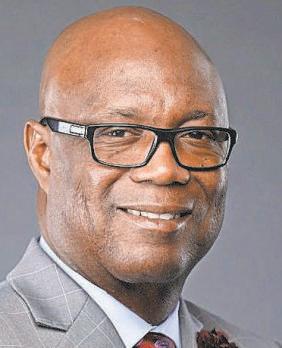

“SHAPE Center obviously just went through a devastating experience at our Family Center, 3815 Live Oak, we had a major fire, and a lot of the interior of the building has been destroyed,” shared Parker. “And the community needs to know. We owe it to our community to let them know exactly what happened.
“It was an electrical fire and it destroyed most of the interior of the building. The pictures on the wall, the furniture, the computer labs, a lot of it was destroyed. But what it did not destroy is our memory and our resolve,” said Parker, who admitted with full transparency and courage that the fire was the most devastating thing he has experienced in his life.
The recent community meeting, held in Our Park, the park adjacent to SHAPE’s Live Oak location, was to let attendees know that SHAPE Center is not gone.


“SHAPE has not been destroyed. Some of the material things in there were destroyed, but SHAPE will continue,” stated Parker. “We are gonna build back better and we are gonna ask the community to join us in doing that.”
Part of that process involves assessing the damage, work that has already begun. Additionally, much of SHAPE’s day-to-day operations have been moved to its Harambee Building (3903 Almeda Rd., Houston 77004). But as Parker told the Defender, several community-serving organizations have been impacted by the damage to SHAPE.
“It’s important to note that when something happens to SHAPE, it happens to the community. Everybody’s impacted by what happens to SHAPE, good or bad. As a result of that fire, many groups that meet at SHAPE, the Association of Black Social Workers, the Death Penalty Abolition Movement, Grieving
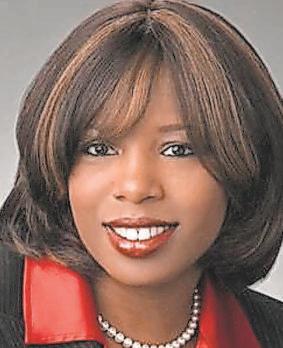
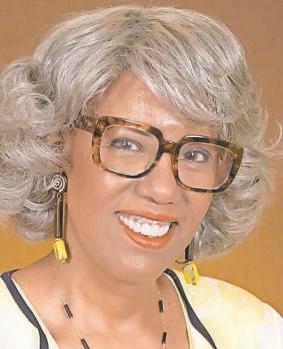
ABOUT SHAPE
SHAPE (which stands for Selfhelp for African People Everywhere) Community Center was founded by “the community” in 1969 because the Houston’s Civil Rights Movement needed a place that could give birth to the programs, that would give meaning to their protests. Today, SHAPE is fondly called “The United Nations of the Hood,” for bringing together people of varied affiliations, for the improvement of the collective. In SHAPE, the Pan-African community finds a distinctive environment which provides a culturally safe space, free from the stigma and trauma of historical exclusion and oppression in an imbalanced power structure.
WAYS TO DONATE AND/OR VOLUNTEER
Visit www.shape.org.
mothers, volunteer community service, the restaurant, and more, all those activities; cannot operate at that facility anymore” he said. Parker was emphatic when he said SHAPE is not closed, but rather still operating.
“When COVID came, we didn’t close down. We just shifted gears and we did what we normally do in a different way. But we did not stop because had we stopped during COVID, there would not be a SHAPE today. You have to change how you do what you do so you can continue doing what you need to do,” he said.

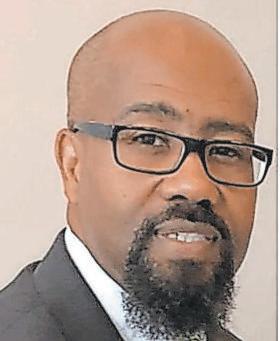
By ReShonda Tate
A new chapter of leadership is underway at the Houston NAACP, as the 2025-26 officers step into their roles with a clear mission: to champion justice, advance equality, and
empower the community in the face of ongoing social and political challenges.
With a bold vision for the future, the newly elected team brings a dynamic mix of experience, activism, and fresh perspectives, ensuring
that the Houston branch remains a driving force for civil rights. From voter engagement initiatives to economic empowerment programs, their leadership will focus on tackling the critical issues affecting Black Houstonians today.
As they take the helm, these leaders are ready to build on the legacy of the NAACP while forging new pathways for progress. Check out the faces of Houston’s civil rights movement.
By ReShonda Tate
As Texas lawmakers push Senate Bill 2 (SB2)—a controversial voucher program that would redirect public funds to private and homeschool students—education advocates warn of an unintended consequence that isn’t making the headlines: the potential destabilization of the Teacher Retirement System (TRS).

While much of the debate has centered on school choice and funding equity, an actuarial analysis attached to the bill reveals a looming financial risk. The report warns that even a small decrease in projected payroll growth—which could happen as more students leave the public system— could render TRS “no longer actuarially sound.” If that happens, contribution rates may need to increase, shifting the burden onto teachers and taxpayers.
This has educators, financial experts, and public school advocates raising the alarm about how SB2 could jeopardize retirement security for the very workforce that keeps Texas schools running.

For Dr. Levatta Levels, a retired Texas educator and a current TRS member, the stakes couldn’t be higher.
“TRS isn’t just for teachers,” she said. “It’s for school bus drivers, cafeteria workers, counselors, administrators—everyone who works for a public school or a state college.”
But what concerns Levels most is a section buried deep in the bill’s 254-page text.
“It’s right there in the small print—they’re predicting our fund could be dismantled,” she warned. “The system is not prepared to
handle the increased retirees that could enter while fewer people pay into the fund. The fund can’t sustain itself.”
The actuarial report backs up her concerns. It states that under current guidelines, TRS should be funded to pay off unfunded liabilities within 30 years. However, if active payroll declines by just 1% per year, that period would stretch to 35 years—and it would take 12 years before the pension fund even begins to recover.
Levels puts it plainly: “The math isn’t mathing.”
The Texas State Teachers Association (TSTA) has been one of the most vocal opponents of SB2. Beyond the concerns about TRS, the organization argues that Texas cannot afford to fund both public and private education systems with taxpayer dollars.
“Texas taxpayers cannot afford two separate education systems, one public and one private,” said TSTA President Ovidia Molina. “They cannot afford to give tax subsidies to wealthy families with kids already in private school, many of whom will receive vouchers under this bill.”
Financial estimates support that claim. While SB2 would cost taxpayers $1 billion initially, projections show that the program could balloon to $6 billion by the 2028-29 budget cycle. The bill’s opponents also cite case studies from other states, including Arizona, Florida, and Georgia, where voucher programs saw funding triple while public education budgets were cut or frozen.
By ReShonda Tate
While there is currently a 30-day pause, President Donald Trump’s sweeping tariffs on Canada, China, and Mexico—America’s largest trading partners—have already begun to rattle markets and consumers.
The policy, which imposes a 25% tax on all imports from Canada and Mexico and a 10% tariff on Chinese goods, is being framed as an aggressive move to curb migration, drug trafficking, and China’s role in fentanyl production.
The U.S., Canada and Mexico have all agreed to pause planned tariffs for at least a month as negotiations over border security continue. China countered Trump’s tariffs on Chinese products with tariffs on select U.S. imports. It will also launch an antitrust investigation into Google and other trade measures.
The economic consequences are already being felt, with financial markets in turmoil and everyday Americans bracing for price hikes in critical sectors such as fuel, food and automobiles.
Allan Boomer with Momentum Advisors, assessed the current financial landscape.
“The market is bracing for an all-out trade war,” Boomer said, pointing to the deep economic ties between the United States and its
neighboring trading partners.
“Mexico and Canada each send more than 80% of their exports to the United States, and retaliatory tariffs from these countries could have severe consequences,” he said. “The ultimate loser in this situation is the consumer.
Ultimately, this results in higher prices.”
Houston author and entrepreneur Kachelle Kelly is one of those already feeling the pain of possible tariffs. In
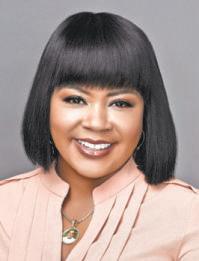

preparing for the release of her book, Boss Friends Pray, she had the terms all set, but went to pay and found the prices had soared.
“I negotiated bulk printing from Alibaba after going back and forth with four vendors. Finally found a sweet spot and contacted to order and the price was 30% more. They are preparing for tariffs. So I had to use KDP Amazon, which is much more expensive. My older books, which are printing in America gets something from China so their prices went up. I’m losing money and have to pass a bit of the price to customers,” Kelly said.
Higher prices will hurt small Black businesses.
“The Defender is among those being hurt by the tariffs,” said Defender Network publisher Sonny Messiah-Jiles. “Our printing costs immediately went up almost 40% in anticipation of tariffs. That means we’ll have to scale back production. There are many Black and Brown businesses that won’t be able to survive an increase.”
Gas prices in the Midwest have already risen by as much as 50 cents per gallon, as Canada and Mexico supply over 70% of crude oil imports to U.S. refineries. The auto industry is also seeing immediate effects, with tariffs
threatening to add as much as $3,000 to the price of some vehicles.
Meanwhile, grocery costs are expected to rise, as Mexico supplies more than 60% of America’s vegetable imports and nearly half of the fruit and nut imports.
“We’re going to feel this in Black and Brown communities,” Boomer said. “Any community
that spends money as a high percentage of their wealth—whether Black, white, or Latino—is going to be hit hard. But for Black and Brown people, who statistically spend the most as a percentage of wealth, the impact is going to be severe.”
NNPA contributed to this report.


February is the month we celebrate both love and Black history. But in the history of Black love, at least in the United States, it’s been a perilous journey.
By Aswad Walker
As Blackfolk, we not only have to navigate through the relationship issues all humans have to deal with, we must also traverse racist-fed generational traumas and ongoing anti-Black landmines that impact how we see ourselves and how we relate to our special someone.
Because of these realities, more couples than we care to remember are couples no more. Yet, some Black couples have successfully journeyed together for decades, and are still making that Black love “thang” work. But how? What secrets do these couples with 10, 20, 30-plus years invested in their relationships know that so many don’t? What are they doing (or not doing) that allows them to continue to grow in love even after all these years?
According to Houston socialite and interior designer Anita Smith, there are no secrets.
“After the beauty of the wedding, the sh*t hits the fan and it’s a lot, a lot, a lot, a lot of work. But in the end, it’s all worth it,” Smith said, laughing.
Still, the Defender pushed forward with the interviews to see if there were any words of advice Black love OGs could share with persons aspiring for that reality.
The Defender spoke to three couples –Rudy and Juanita Rasmus, founding pastors of St. John’s Downtown; Jodie and Sonceria “Sonny” Messiah Jiles; and Norma “Raawiya” Thomas and Angela “Mayasa” Cezar Obike – each with at least 30 years together. The goal: to find out what hidden information they use that can help other couples aspiring to experience Black love longevity.
Moving from honeymoon phase to lasting relationship
Successful businessman and member of multiple boards, Jodie Jiles shared his advice on making the transition from the early stages of a relationship first sounding like a preacher, then like an MBA professor.
“The most important thing for any couple is to put God in the middle because marriage is like a rollercoaster; it has its ups and its downs,” said Jiles. “It’s like any organization or anything you do in life; as you progress, you gain institutional knowledge, you gain the pluses and the minuses, and you, you get
to know each other better. Therefore, you develop a style individually and collectively.
And the individual style is, ‘Do I walk away from this tough situation or this argument, or do I stay here and go back and forth?’ And
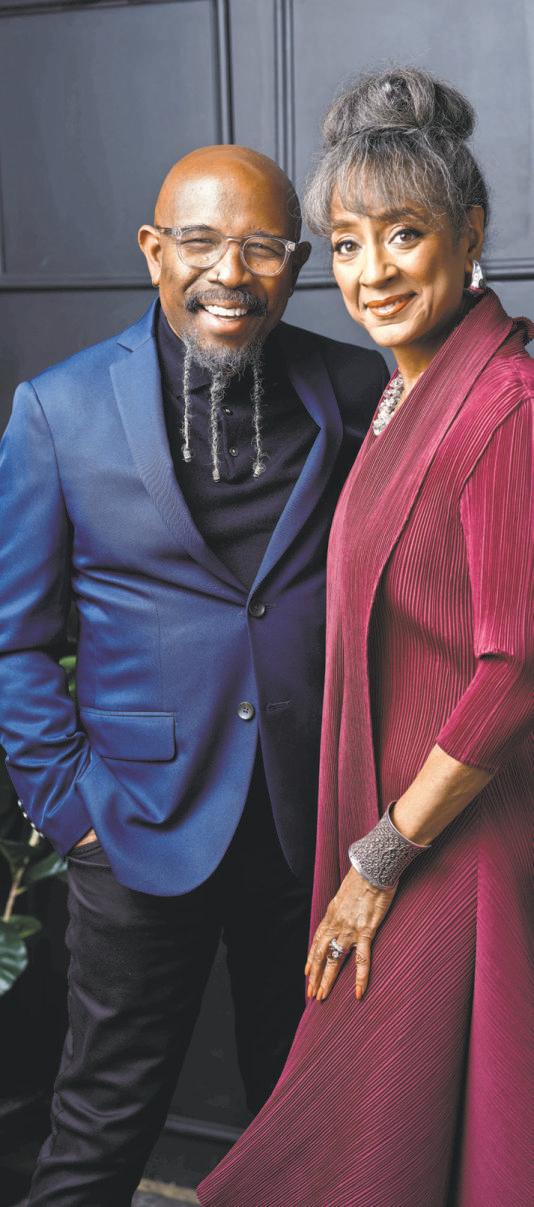
over time you learn to just walk away…”
“From the argument, not the marriage,”
Sonny interjected with a smile.
“Yeah. It’s just a matter of managing the process,” Jodie concluded.



Making that transition for the Jiles also involved serious, open, and honest conversations.
“I think the beginning years for us were a little rough because after getting pregnant with the first child, Jodie came to me and said that he wanted to change careers. And as a result, almost immediately, surprise, I was pregnant with the second child, and I was looking at Jodie like, ‘You wanna do what?’,” recalled Sonny.
The pair then made an agreement that Jodie would go ahead and take the required Series Seven to become an investment banker, knowing their first five years were going to be rough.
“So, we made an agreement that I would carry the family for those first five years, and then after that, we’d sit down and evaluate, ‘Was that a good investment?’
Turned out to be a good investment,” said Sonny.
Relationship-preserving actions
Because all couples go through difficult patches and daily tensions, the Defender asked the couples what actions do they take to preserve their relationships.
“I’m a serious Virgo… I like my space. Not only do I like my space, I’m pretty much a hermit. I can be in this house 24/7, and every now and then, I feel the need for


human interaction, and I’ll come out,” shared Raawiya. “I’m saying all that to say that when it comes to our relationship, I literally, on a regular basis, make the decision, this is the relationship that I want. And so, I’m in today.
When things happen, that’s what I ask myself, ‘Is it a deal breaker? Do I love this woman enough to get beyond what just pissed me off? What she just said, is that a walk away a moment?’
The most important thing for any couple is to put God in the middle because marriage is like a rollercoaster; it has its ups and its downs”
“You have to ask yourself those questions. You have to be realistic about it, because if not, then things have a tendency to build, and you haven’t dealt with the little stuff. Because over how many years are we now? This year will be 34 years. So, over a 34-year period, that’s a lot of living.”
Showing appreciation
Couples also discussed those things their partners do to show them appreciation, a critical habit to develop that creates a stronger bond.
“I’m going through a unique time right now in that my mom has been given a stage four lung cancer diagnosis. So, I’m in this season where, while I’m not the primary caregiver for my mom, my dad is, but I’m engaged in the course of the week, giving him relief,” said Juanita. “One of the things that Rudy knows that I like is notes. And so
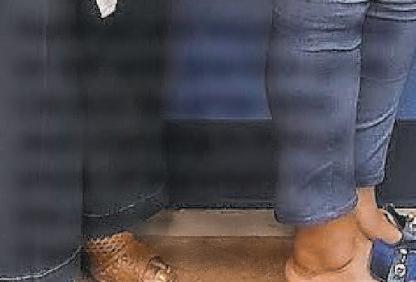

What does the self-described “perfectly happy’ couple look like?
Have open communication with partner
Much more likely than average to have had relationship therapy
Younger than average, at 25-44 years
They have a wide circle of friends
Personality traits:
More likely to have 2+ kids living in their household
They are more likely than average
today, in my bag are two notes from him. He has been giving me notes throughout this whole thing. I love flowers. So, he brings fresh flowers. There are things he knows I don’t like to do, like grocery shopping. So, he calls and says, ‘Hey, I’m gonna stop by the store. Is there something you would like?’ It’s the knowing for me. It always boils down to knowing your partner’s love language.”
Remembering when they first met
The first question for each couple involved remembering when and how they first met, who spoke first, and what did they say. None of them listed this remembrance as part of their advice for keeping their relations strong. However, the way each couple lit up, smiled, and laughed while reflecting on that moment revealed the importance of revisiting it and other such early encounters with your boo.

By Aswad Walker
Te recent election of Texas House Rep. Gene Wu of Houston as the new Texas House Democratic Caucus (HDC) chair symbolizes the city’s changing political landscape. Tis applies directly to Ft. Bend County, where the number of Asian American Pacifc Islanders (AAPI) has exploded.
For the past few decades, Ft. Bend County has become a center of growing Black political infuence. Te recent increase in AAPI residents and political participation has many wondering if an Asian-Black political coalition is a current and/or future reality.
Wu (TX Houston District 137) has for years stood shoulder-to-shoulder with members of Houston’s Black community in various political battles.
He fought against the state takeover of HISD and Gov. Greg Abbott’s voter suspension eforts that removed over two million individuals from Texas voter rolls just two months before the Nov. 5 election.
“Te state of Texas under Gov. Abbott has had a long track record of fnding ways to make sure that people he doesn’t like can’t vote,” Wu said just before the 2024 Presidential Election.
In 2020 Wu and State Senator Borris Miles fled bills to ban no-knock warrants statewide in hopes of protecting Texas citizens from the “no-knock” fate that led to Breonna Taylor’s death.
Texas Southern University political scientist Michael O. Adams identifes the Southwest Houston area as one of the locations where growing AAPI political power is being fexed.
“As embodied in the person of Vice President Kamala Harris, the Black and AAPI relationship is growing and strengthening, particularly in Southwest Houston and Fort Bend County,” said Adams. “Te election of Black and AAPI elected ofcials in these areas highlights this strengthening bond.”
Adams points out that the AAPI population is growing at the fastest rate of any demographic, and their political power is expected to grow exponentially. Te intersection of Black and AAPI communities is particularly significant in Fort Bend Country, one of the most diverse counties in the U.S.
“Tis area exemplifes the demographic shifs transforming the region’s political landscape. Both communities have grown substantially, not just in numbers but also in civic engagement… Fort Bend has become a focal point for Asian American political activism, ofen overlapping with issues pertinent to the Black community, such as education reform and healthcare access.”
Fort Bend County Precinct 2, Place 1 Judge Roderick Garner views the Black/ AAPI relationship as “complex.”
NOTICE TO BIDDERS
The Metropolitan Transit Authority of Harris County, Texas (METRO) is planning to issue the procurement documents listed in this advertisement.
RFP No. Doc1430212213: Turnkey Operation of METRO’s Northwest Bus - Operating Facility. Solicitation will be available on or about 02/10/2025.
RFTP No. Doc1455398352: Wheel Truing Machine Replacement. Solicitation will be available on or about 02/12/2025.
Prospective bidders/proposers can view and download these solicitations by visiting METRO's website at ridemetro.org/Open Procurements. If you are unable to download the documents or are having difculty, please contact 713-739-6886 or email Contracts/Property Services at propertyservices@ridemetro.org.
Notice is given that Letters Testamentary for the Estate of Oscar Arredondo, Sr., Deceased, were issued on February 5, 2025, in Cause No. 531238, in County Court at Law No. 2, Harris County, Texas, to:
Margie Arredondo. All persons having claims against the Estate which is currently being administered are required to present them to the undersigned within the time and in the manner prescribed by law.
Rivera Eaves Law, PLLC
201 E. Myrtle Street, Suite 130, Angleton, Texas 77515
DATED the 13 day of February, 2025.
Dennisse M. Rivera Eaves
SBN: 24124095
Tel: (832) 331-1317
Fax: (832)737-0584
E-mail: dennisse@riveraeaveslaw.com
The Metropolitan Transit Authority of Harris County, Texas (METRO) is planning to issue the procurement documents listed in this advertisement.
IFB No. Doc1442992979: Commercial Graphic Installation Services. Solicitation will be available on or about 02/04/2025.
IFB No. Doc1423179582: Concrete and Asphalt Paving for Mobility Improvements within METRO Service Area. Solicitation will be available on or about 02/04/2025.
Prospective bidders/proposers can view and download these solicitations by visiting METRO's website at ridemetro.org/Open Procurements. If you are unable to download the documents or are having difculty, please contact 713-739-6886 or email Contracts/Property Services at propertyservices@ridemetro.org.
THE HARRIS CENTER FOR MENTAL HEALTH AND IDD REQUEST FOR COMPETITIVE SEALED PROPOSAL
Construction of a Northeast Community Wellness Center
The Harris Center for Mental Health and IDD is requesting Competitive Sealed Proposals pursuant to Chapter 2269 of the Texas Government Code and 2 CFR Part 200 from qualifed construction frms for construction of Northwest Community Wellness Center for consumers served by The Harris Center for Mental Health and IDD. The site will be located at 7529 Little York Road, Houston, TX 77016 Project Number: PUR-FY25-309 .
Specifcations may be secured from The HARRIS CENTER, Purchasing Services located at 9401 SW Freeway, Houston, Texas 77074; telephone (713) 970-7279, The HARRIS CENTER website www. theharriscenter.org or the Electronic State Business Daily Site https://portal.cpa.state.tx.us/ beginning Monday, February 3, 202 5. A mandatory in-person Pre-Proposal Conference will be held on Thursday, February 27 , 2025, 10:00 a.m. CST at 9401 Southwest Frwy, Room 104, Houston, TX 77074.
Deadline for prospective vendors to submit questions to this CSP is Wednesday, March 5, 2025, 5:00 p.m . CSP responses must be submitted to Purchasing, 9401 SW Freeway, Houston, Texas 77074 by 10:00 a.m. March 17, 2025, in a sealed envelope marked "CSP - DO NOT OPEN UNTIL–10:00 a.m. March 17, 2025 “Northeast Community Wellness Center CSP ”. A public opening of the proposals will occur immediately following the proposal submission deadline at 9401 SW Freeway, Houston, Texas 77074. Any questions pertaining to this solicitation should be addressed in writing to Sharon Brauner, C.P.M., Purchasing Manager, Sharon.brauner@theharriscenter.org , James Blunt, C.P.M., James.Blunt@theharriscenter.org , and Nina Cook, MBA, CTCM, CTCD, Director of Purchasing, Nina. cook@theharriscenter.org or fax to (713) 970-7682. Minority-Owned Businesses and Women-Owned Businesses are encouraged to participate. The HARRIS CENTER reserves all right to postpone, accept or reject any and/or all proposals as it to waive formalities and reasonable irregularities in submitted documents as it deems to be in its best interests and waive formalities and reasonable irregularities. is not obligated to accept the lowest proposal.
This solicitation (CSP) is subject to addenda, including but not limited to, an extension of the submission deadline, communicated through www.theharriscenter.org .
“Tere seems to be a mutual acceptance from a cultural and assimilation perspective,” said Garner. “However, some in the African American community are skeptical about the manner in which other demographics receive deference from the establishment (city, county, state, federal), yet Blacks fnd themselves clawing for equality
on all levels. Tis sentiment applies to the AAPI community, as well.”
Garner says as elected ofcials, “Blacks have done considerably well,” but not so much regarding county executives who are not elected.
“Blacks do not enjoy the same opportunities. Te question is, ‘Why’?”
By Tannistha Sinha
Former Miss Black
Texas
USA 2020 Sabrina
Lewis uses her platform to build financial wellness among marginalized communities.
As one who defied stereotypical standards of beauty and embraced African American ideals that were once considered negatively, she is now focusing on uplifting communities with financial literacy as the chair and director of Houston Money Week.
“I don’t know if I would’ve been listened to had I not been Ms. Black Texas,” Lewis said, who won the title in 2020. “As an African American woman, I know we face a lot of being

https://www.houstonmoneyweek.org/
silenced in the workplace, and sometimes maybe just not being listened to until it’s time to fix something that’s really problematic.”
Lewis was born in Wichita Falls. She was the third of nine siblings and completed her bachelor’s in Sociology from Lamar University. Soon after, she joined the U.S. Navy.
However, she realized that despite making “a lot” of money, she was still seeking happiness. Someone suggested she consider a certification in financial planning to help people figure out their finances. She followed the advice and received a certification in the field from Texas A&M University.
During COVID-19, she quit her job and moved to Hempstead to understand her life’s mission as “all 20-something-year-olds do.”
Lewis realized pretty quickly that she wanted to help the African American community build wealth and bridge the racial wealth gap when she stumbled upon the Ms. Black USA pageant.
In October 2020, she became the ambassador for the Houston Financial Empowerment Center and was promoted to the BankOn Houston Program Director at the Mayor’s office. Lewis was also the 2020 National Association for the Advancement of Colored People (NAACP) Voter Campaign.
Houston Money Week is a citywide initiative that focuses on advancing financial literacy for Houstonians.
According to its website, the organization has served more than 41,126 Houstonians since 2016.
As chair and program director, Lewis aims to build economic awareness and monetary sustainability. In other words, she helps people make, save, and grow their money.
“We work with organizations, both for-profit and non-profit, to curate events that will be more impactful to the community,” Lewis said. “I use the term Actionable Education…For example, you don’t just educate someone that they need a bank account. You give them the opportunity right there to open a bank account, and you give them the resources to do so.”
Lewis said 45% of Houston Money Week’s events in 2024 were tailored toward women and refugees, 30% for youth under 18, and some helping the Black community. Its program, Every
Teen, integrates high school seniors, helping them get their state ID and open their very first bank account. Lewis said this program was conducted in Houston ISD schools like Wheatley and Sharpstown High Schools, which have a significant population of Black students.
“It’s a really big deal because, as we know with the racial wealth gap, that also comes from not being in certain professional fields,” Lewis said. “The problem is not that young African Americans do not want to be in these fields, but they’re never exposed to them. They may never see the inside of a bank until they get a job where they say you have to have a bank account.”
Lewis said her parents and grandparents worked “very hard.” She noticed that her grandparents, who picked cotton and lived in a sharecropping system, seemed to know about insurance, which others in their community did not. They were among the first people in their neighborhood to buy a home.
That got Lewis interested in understanding what she calls the “missing pieces”—annuities, insurance policies and legacy planning.
“It’s good to have a will, but there’s more to it, or else your children may end up in probate court,” Lewis said. “I could see it wasn’t necessarily that Black people were not buying homes because they did in the fifties and sixties, and the forties and the seventies. It was the transition of that wealth from one generation to another. And the lack thereof was due to not knowing the American financial system and how it operated. That became of high interest to me, and that’s why it was my philanthropy for Ms. Black Texas, financial wellness for all. The statistics show that African Americans do not earn as much as other races and counterparts despite consistently working.”
Lewis advises the Black community not to save but to invest, including 401k plans or stocks.
“It doesn’t have to be a large amount,” she advised. “It could be 20% or 50% of what you were gonna put into the savings. The other thing I would say is to start now. Don’t wait till tomorrow.”
She also advised negotiating one’s worth, changing jobs every two years, and finding a skill “no one can take from you.”
“Money is a tool,” Lewis said. “The tool is only as good with proper maintenance use and understanding. Only then can you have your money work for you and not you working for money.”
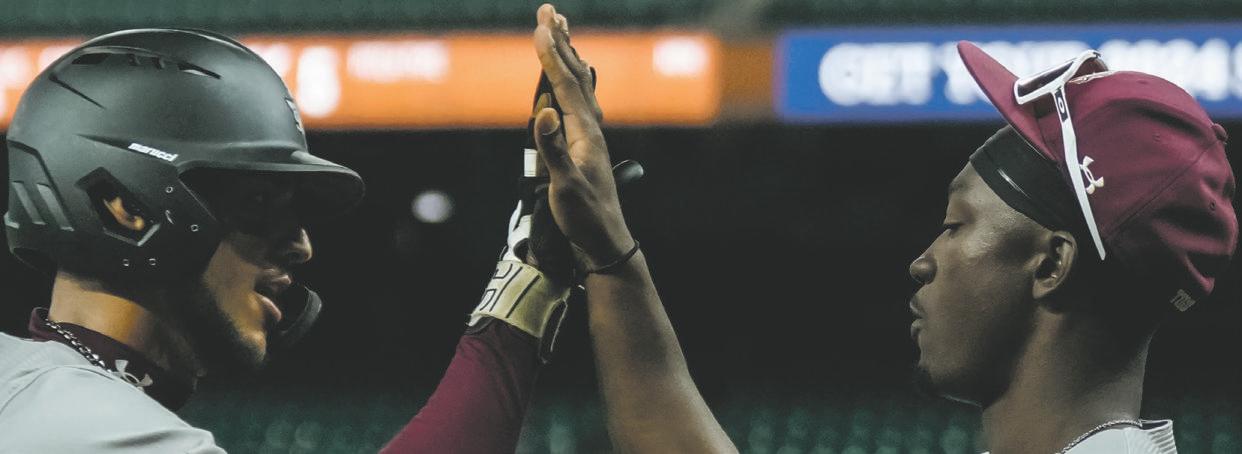

By Terrance Harris
When talking about how HBCU baseball teams sometimes have to feld a roster, Prairie View coach Auntwan Riggins brought it back to the cult classic movie Friday and one of the funniest quips by Chris Tucker’s fctional character Smokey.
“I always tell my coaches, we never have two things that match,” Riggins said. “Either you’ve got a guy who can hit but can’t run or is average on defense. Or he is a good defensive guy and doesn’t swing the bat as well as he plays defense. But we have to make that work. From that standpoint, we have to utilize their God-given abilities to help them because they don’t know.”
To Riggins’ point, HBCU baseball may not always come perfectly packaged, but these baseball programs continue to thrive and make strides while allowing student-athletes to develop their games and receive a college education. Tere have been no bigger proponents of growing HBCU baseball than longtime Texas Southern coach Mike Robertson and Riggins.
“Te place where you want to be is (at an)
HBCU because a lot of other programs you may be a part of it because you are going in for the gleam and glitter. You actually have an opportunity to be chasing fair balls instead of foul balls,” Roberston said. “Tat’s my conversation to (perspective recruits). Do you have a realistic chance to play, because if you are not playing, you are not developing. We’ve got to understand that.”
It was easier for baseball players and their families to understand that HBCUs were a viable option when they were the only option for Black players. But as the game has evolved from having one Black student-athlete playing in centerfeld, predominantly white institutions now see the value of Black athletes at all of the infeld positions, behind the plate, and even on the pitching mound. Tat, along with the NCAA Transfer Portal and Name, Image, and Likeness money, has considerably thinned the talent pool available to HBCU programs.
But coaches like Riggins and Robertson, along with other coaches in the SWAC and MEAC have continued to beat the bushes for talented players. Nurturing raw talent is an
essential part of the process.
“I don’t think it’s hard to fnd Black talent. But is it hard to get? Yes,” Riggins said. “It doesn’t defne how I recruit because basically, we are never going to get that kid who is throwing 95 (miles per hour), so you’ve got to develop it. We go out and get kids who have some basic good fundamental things about them, and the rest of the stuf we are arrogant enough to think we can develop it.”
As a result, baseball at the HBCU level is experiencing something of a renaissance as it gains popularity among players, coaches and fans. HBCU players are now garnering even more attention from Major League Baseball.
Much of that comes from the increased exposure the game is receiving from preseason competitions like the upcoming Tird Annual Cactus Jack HBCU Classic at the recently renamed Daikin Park , (formerly Minute Maid Park) that will feature Southern, Grambling State, Jackson State, Alabama A&M, Prairie View and Southern in a roundrobin competition from February 14-16. Ten the week following the HBCU Classic, the MLB Andrew Dawson Classic will be played
at the Jackie Robinson Training Complex in Vero Beach, Fla. Select players also have a chance to participate in the Ken Grifey Jr. HBCU Swingman Classic each summer.
Te HBCU Classic was the brainchild of Astros executives Paula Harris and Daryl Wade. Tey had watched the Astros Foundation College Classic, which has featured top programs like the University of Texas, Texas A&M, LSU, and Rice in a preseason roundrobin tournament since 2001 at the former Minute Maid Park and wanted HBCUs to have a showcase on that level.
“We’ve been doing that College Classic for 26 years now, and this allows our children the opportunity to get to play on that feld and have that experience,” Harris said. “Their grandparents get to come see them pitch from a Major League Ballpark. It’s really important to us.”
It’s also been really important to the participating HBCU programs.
“This will be the third year that we’ve played in the Cactus Jack and that has grown tremendously,” Roberston said. “We had no idea it was going to take of like that.”
By Jimmie Aggison
Lamar High School has had many talented players over the years to walk the halls, play on the field, and go on to higher heights. However, Dramodd Odoms is going where no one else has gone before as he is now listed as HISD’s only 2025 5-star recruit.
“It feels good to get my fifth star. Prior to the season beginning, I felt that I was underrated, so I feel it was well-deserved,” said Odoms.
According to 247Sports, Odoms is ranked No. 15 in Texas, No. 12 among offensive tackles, and No. 80 nationally in his class. As a junior during the 2023 season, Odoms helped Lamar achieve a perfect 6-0 record and secure first place in 6A Region III District 18. Lamar advanced to the third round of the playoffs before falling to Atascocita, 34-14.
“We’ve been blessed to watch Dramodd develop as a player and as a person,” said Lamar head football coach Michael Lindsey. “He is a great teammate and loves his team. Dramodd was utilized as a weapon on offense, unlike any offensive lineman I have coached. He was part of the game plan every week using his unique abilities to help us make explosive plays.”
Odoms is a three-year varsity letterman. In his senior year, he was named to the District 18-6A First Team Offense along with all-purpose back Dramarcus Bradford, tight end Caleb Spadone and offensive lineman Danny Stein.
“We’re very proud of Dramodd. He’s done an excellent job; kids have to work extremely hard to receive a five-star rating,” said HISD head athletic director Andre’ Walker. “He’s going to go on and do great things in college and there’s going to be others to follow him and get their stars, as well.”
A 5-star rating is given to a high school athlete recognized as an elite talent with the potential to make a significant impact in college. These athletes are often the best on the field and have strong prospects for success at both the collegiate and projected professional levels. Factors such as size, fundamental skills, game IQ, competitiveness, athleticism, and potential for continued growth and development are key considerations in earning a five-star rating.
“I started playing football when I was five years old. Football gave me an outlet to express myself. I knew I had something special when I received my first offer freshman year from TCU,” said Odoms. “Working with Coach Tibbels helped me improve because





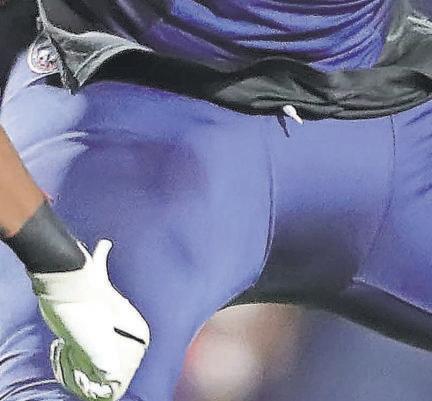
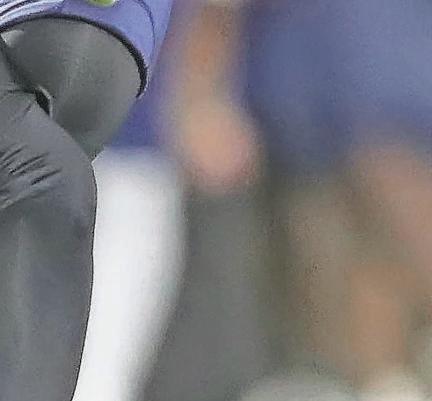


ABOUT DRAMODD ODOMS
@_dramoddodoms
@dramodd1
Offensive tackle
Height & weight: 6-feet-6, 285 pounds
Rod Wave
Committed to SMU
Favorite subject: Math Mom, Coach Lindsey, Coach Tibbels and friends.
role was to simply develop those great qualities he already had naturally in his game. Dramodd was always searching for opportunities throughout the week to improve his game.”
Following his senior season, Odoms was selected to play in the Navy All-American Bowl, a prestigious high school all-star game featuring the nation’s top talent. Sponsored by the U.S. Navy, the game gives players a stage to showcase their skills before making their college commitments.
“I felt excited being a part of the Navy All-American Bowl. I was ready to show how my talent compared to that of other high-level players,” said Odoms.
Next season, Odoms will play at Southern Methodist University (SMU). The highest-ranked offensive lineman signee in SMU history, Odoms held over 20 offers but chose to take his talents to SMU over Mississippi State and Purdue, where he also took official

prior to working with him, I was a defensive lineman; I didn’t switch to the offensive side of the ball until eighth grade, but I listened and learned a lot from him.”
Odoms is the ideal prototype for an offensive tackle. Standing 6-foot-6 and weighing 270 pounds, he is often the biggest player on the field. With a 315-pound bench press and a 455-pound squat, his strength enables him to withstand the physical demands of
the game. His flexibility allows him to bend low with leverage, while his quick footwork helps him engage effectively against faster defensive ends.
“Dramodd is an elite football player. He had the tools to be a great offensive lineman from day one,” said Lamar offensive line coach Brandon Tibbels. “He has natural athleticism, a very high football IQ, and has always played with extremely high effort. My
“SMU is a great school. It was my first official visit, and they treated me well. I really enjoyed the coaching staff, the players, and the program, especially since they’re on the rise after recently making the playoffs,” said Odoms.
Odoms’ journey from a young football player to HISD’s only five-star recruit in the 2025 class is a testament to his dedication, talent, and relentless work ethic. His impact at Lamar High School will be remembered for years to come, serving as inspiration for future athletes striving to reach the next level. As he prepares to take the field at SMU, Odoms carries with him the legacy of his hard work, the support of his coaches and teammates, and the determination to continue excelling at the collegiate level. With his skill, mindset, and drive, the future looks bright for this rising star.
By GEORGE ADESINA, MD, MSPH, FACC
Heart disease remains the leading cause of death in the United States, and African Americans are especially at risk due to a combination of genetic, environmental, and social factors. February, which is both Black History Month and American Heart Month, is the perfect time to prioritize the health of our community and focus on prevention.
High Blood Pressure and Impact on African American Community
High blood pressure often develops earlier and more severely in the Black community, placing extra strain on the heart. Diabetes, which is more prevalent in the Black community, can damage blood vessels and increase the likelihood of serious heart complications over time. And elevated cholesterol, if left untreated, contributes to artery blockages, significantly raising the risk of heart attack or stroke.

George Adesina, MD, MSPH, FACC, is a board-certified Cardiologist who cares for patients at KelseySeybold’s Pearland Clinic.
Scan to view Dr. Adesina’s online profile.
Heart disease often develops silently, without noticeable symptoms, making early detection and prevention essential. Here are key steps to reduce your risk:
• Know Your Numbers: Regular screenings for blood pressure, cholesterol, and blood sugar can catch problems early. Include these tests in your annual checkups and stay informed about your health.
• Stay Active: Aim for 30 minutes of moderate exercise most days. Consistency is key, so find activities you enjoy, such as walking, dancing, or cycling, to make staying active sustainable.
• Adopt a Heart-Healthy Diet: A balanced diet rich in vegetables, fruits, whole grains, and lean


proteins supports cardiovascular health. So does reducing your intake of salt and added sugars, and choosing healthy fats like those in avocados and nuts.
• Quit Smoking: Smoking damages blood vessels and raises blood pressure, significantly increasing the risk of heart disease. And quitting provides near immediate benefits, like improved circulation and a lower risk of heart attack.
Heart health is about more than preventing disease — it’s about living well. Kelsey-Seybold Clinic offers comprehensive care, including routine screenings, lifestyle counseling, and personalized treatment plans.
Call 713-442-0000 or visit kelsey-seybold.com to get started and take a step toward better heart health.


